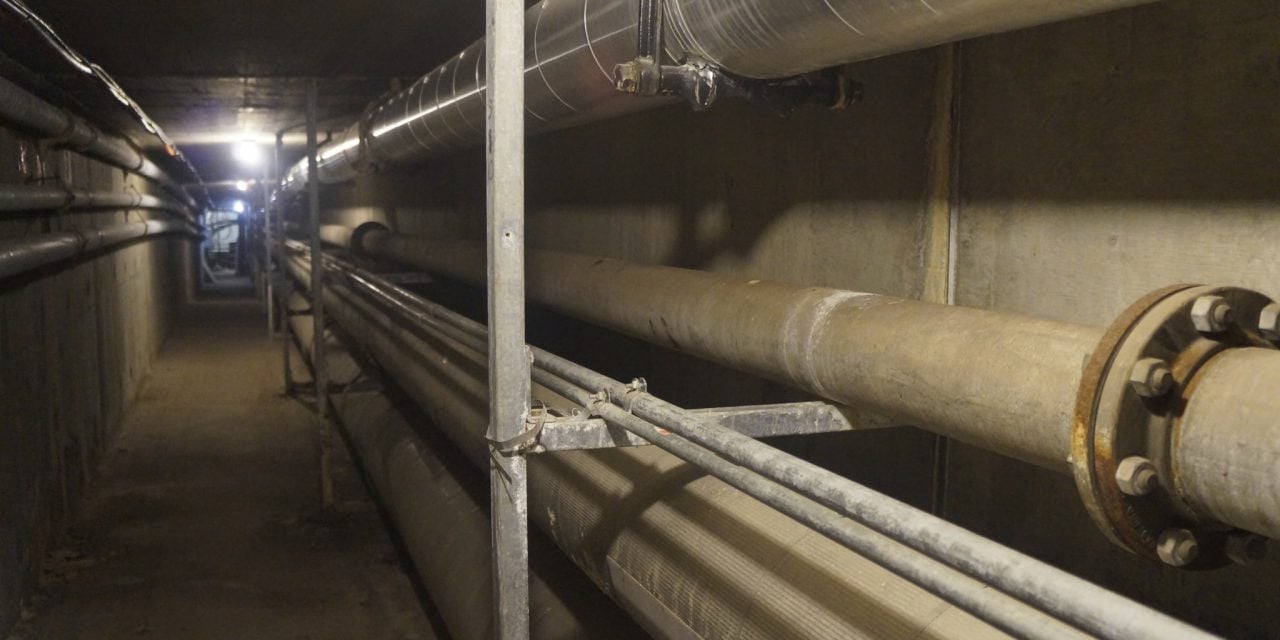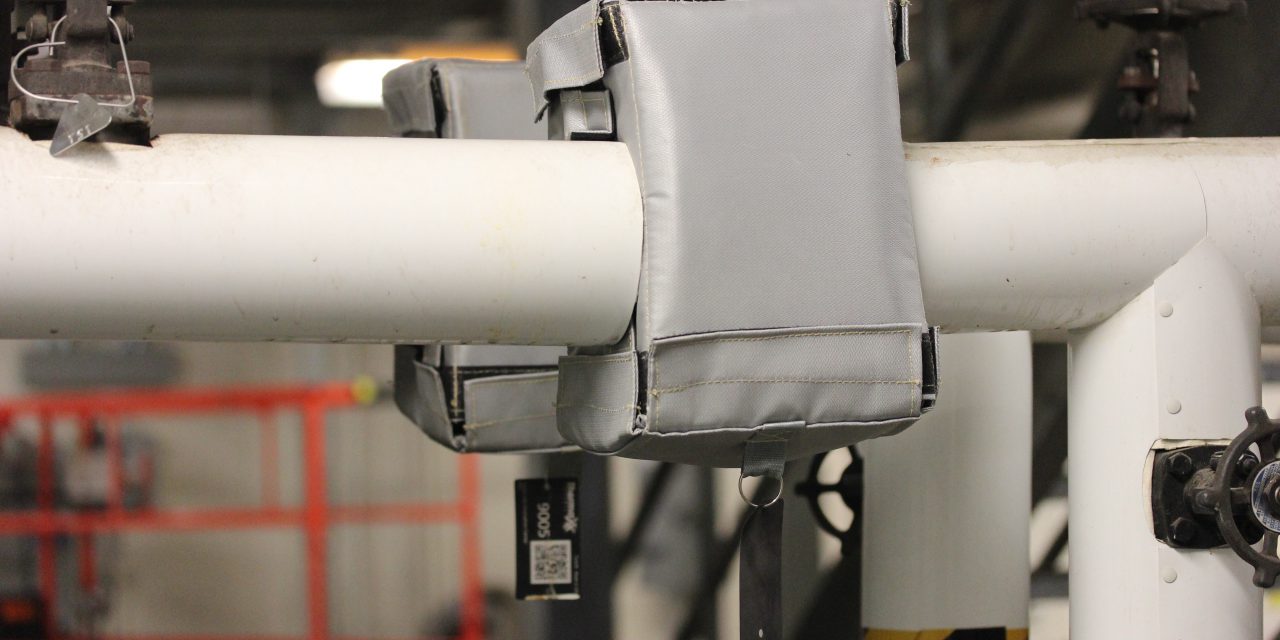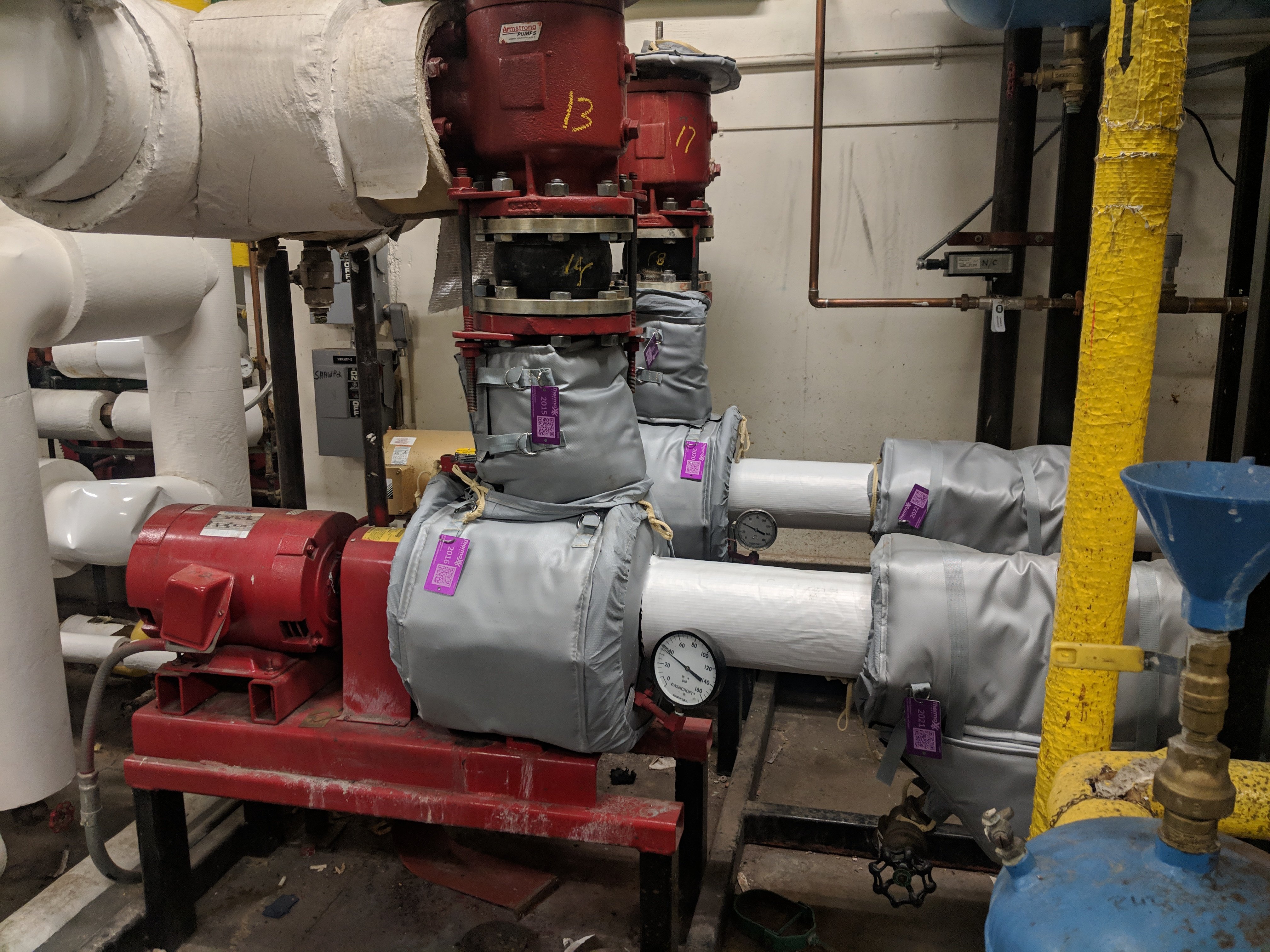What Kind of Insulation Should You Use in Steam Tunnels and Pits?
Many facilities contain buried steam lines which originate in the power house. These buried steam lines are used to bring steam to noncontiguous buildings and structures, allowing heat to be provided through a central power plant. Another name for this is “District Heating.”
Manholes and pits are usually strategically placed to allow for access to buried vaults. These vaults, or concrete structures, vary in size but are normally 10’ x 10’. This is where the shut off and maintenance valves are located. These shut off valves give the utility staff the ability to shut off the steam to facilitate replacement or maintenance operations in the buildings.
Steam Vault Insulation Issues
When insulating components within the steam vault, three special issues must be considered: moisture, heat, and location.
- Moisture: Most vaults are damp due to rain water runoff or ground water. Moisture and insulation are normally not used in the same sentence; thus, specifying the correct insulation is very important.
- Heat: The ambient temperature in a vault is directly related to the steam pressure and existing pipe-component insulation in place. Ambient temperatures greater than 150°F are not uncommon. Steam vaults often suffer from “Out of sight: out of mind” syndrome.
- Location: Steam tunnel access is usually located at intersections or on sidewalks. Costly confined space entry and traffic control usually makes vault entry a process that should be limited as much as is possible.
How do I specify the right Removable Jacketing Material?
You must keep the above mentioned conditions in mind when picking the proper jacketing material. First, understand the steam pressure. Knowing the maximum pressure and temperature will determine the thickness of the insulation. Most projects are designed by picking an appropriate touch temperature. This is the temperature of the outside of the insulation cover. Second, look at potential water. If the vault or pit is subject to moisture, choose a hydrophobic insulation material. In addition to hydrophobic insulation, jackets should have a 1/8” grommet on the low point of the jacket for drainage. In the event of water filling the jacket, the grommet will allow the water to evacuate and the steam will help dry. Third, understand the age of the system. If the system is older, you may want to choose a Teflon product for the hot-side of the jacket to help protect the jacket against periodic steam leaks.
Example: What is the perfect insulation jacket for a 325°F steam gate valve, located in a potentially wet vault?
Hot-Side of Jacket: Teflon coated fiberglass
Insulation: 10 to 15mm Pyrogel Insulation. It is very important that the insulation be sewn into the jacketing material allowing it to be an integral part of the jacket. This will allow the insulation to stay in place during the wetting and drying process.
Cold-Side of Jacket: Silicone coated fiberglass
Thread: Teflon
A quality-made insulation jacket constructed of these materials will keep things dry and keep heat where it belongs — in the steam system.

Thermaxx Jackets
Thermaxx Jackets was founded over 25 years ago with a single purpose: to help our clients save energy with removable insulation blankets when traditional stay-in-place insulation is not practical. Our dedication to this purpose has resulted in a long list of customers who have saved money thanks to Thermaxx Jackets! Combining expertise in heat loss, wireless monitoring, insulation design, and several other disciplines, we’ve become the #1 provider and fabricator of removable insulation jackets and covers. The Thermaxx Sales and Service teams are experienced and trained to provide clients with the most timely and cost-effective solution.
Categories
- removable insulation
- thermaxx jackets
- energy savings
- savings
- energy efficiency
- safety
- pipe insulation
- energy
- case study
- insulation materials
- thermal insulation
- heat loss survey
- heat loss
- energy loss
- hot insulation
- fiberglass
- installation
- steam
- New York
- custom insulation
- NYC Case Study
- boiler
- university
- Connecticut
- reusable insulation







